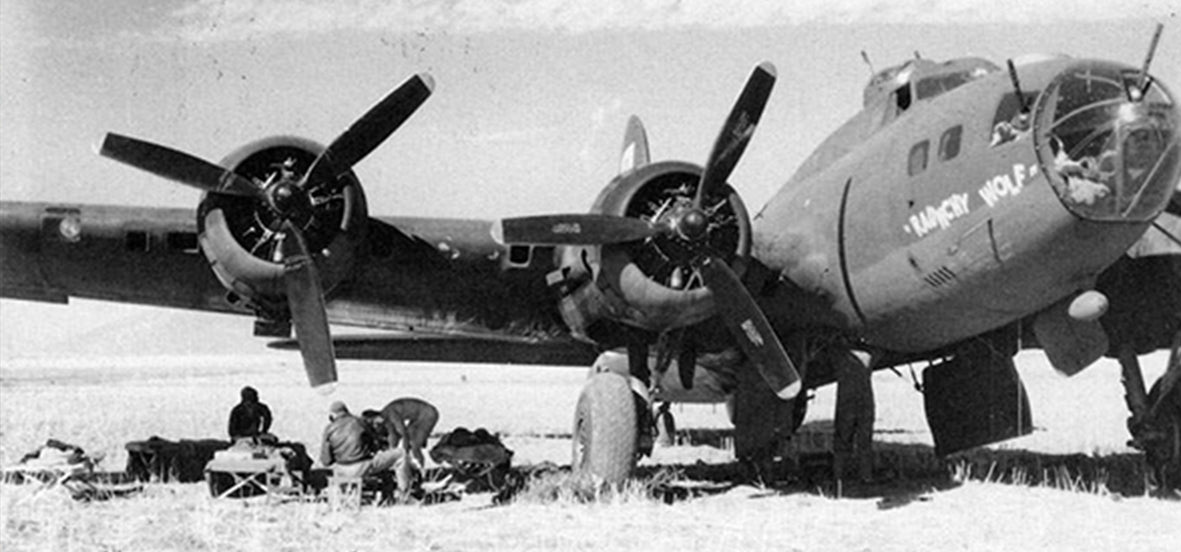B-17 Flying Fortress, named "Raunchy Wolf” (image above)
In the icy grip of a Sunday evening on 26th September 1943, high above the Essex countryside, First Lieutenant Paul Yannello gripped the controls of his B-17 Flying Fortress, "The Dorsal Queen." A steady-handed pilot from Pennsylvania, with 11 missions under his belt, Yannello was the kind of unflappable leader who inspired his crew—young Americans like co-pilot Frederick Wilson, from New Mexico with a quick wit, and navigator Guilford Black, an Iowan whose meticulous charts kept them on course through Europe's deadly skies. Beside him flew "Raunchy Wolf," commanded by Lieutenant John Keeley Jr., a 25-year-old New Yorker known for his calm under fire, equally battle-hardened.
The day had begun routinely: a raid on Reims airfield in Nazi-occupied France, part of the U.S. Eighth Air Force's relentless push from RAF Great Ashfield in Suffolk. But dense clouds forced an abort, leaving the bombers heavy with undropped ordnance. As they descended through blinding fog, windshields frosting over, disaster struck. At 6,000 feet over Bulphan, the planes collided—Dorsal Queen’s tail shearing off, Raunchy Wolf’s wing crumpling before they fell to Tillingham Hall Farm and Nutty’s Farm respectively. Explosions lit the dusk; 20 airmen perished in the flames, their dreams of home extinguished. Only tail gunner John J. Adams parachuted to safety, a lone survivor amid the wreckage strewn across ploughed fields.
Eighty-one years later, in autumn 2024, local historian Sue Lister unearthed a poignant relic from that very soil: the remnants of a Conway Stewart fountain pen, cap intact, its 14ct gold nib gleaming defiance. Identified by our historian Steve Hull as a No. 236 model from the late 1930s—lever‑fill, in rich burgundy‑and‑black marble—this British‑made treasure almost certainly belonged to 1st Lt Arthur Ross Moore, navigator of Raunchy Wolf, the crewman most reliant on ink for plotting paths.

No. 236 Marbled Burgundy/Black (similar to the Conway Stewart that was unearthed)
How did it reach an American airman’s pocket? Perhaps purchased in a Suffolk shop during downtime, or did he buy it in USA? Conway Stewart pens were exported all over the world and were known for their high quality so it is possible he bought the pen in his home town. This surviving Conway Stewart pen symbolises our heritage, proof that unfaltering quality survives, and is a reminder of the bond between America and Britain. Sue Lister presented the pen to the RAF Hornchurch Heritage Centre on 1 August 2025, so the memory of these brave men can be remembered for future generations.

Sue Lister presenting the Conway Stewart that was unearthed to RAF Hornchurch Heritage Museum (pictured in the middle is Sue’s great nephew Fletcher, an avid aviation enthusiast)


发表评论